Realtime Analytics
Home ► Quick Access ► Realtime Analytics ► Content Types ► Supervisor: Extended
Extended Supervisor Overview
Introduction
OI has introduced a new feature to the Supervisor Extended view that enables the Agent Presence Status (reported from PureCloud) views to be filtered.
PureCloud can present multiple presence states for agents. This causes an issue in traditional call centre environments where a single status is expected that summarizes everything. To make life easier, Omni Intelligence has created “Custom Filters”.
How can an agent be in multiple states at once?
In a traditional Private Automatic Branch Exchange (PABX)/Call Centre, an agent can be (simplified) available to take a call, or not available to take a call. These two states can often be broken down into more detailed (sub) statuses, to give a more detailed indication what agents are doing at any given time.
PureCloud isn’t a traditional PABX. In PureCloud, a user can present multiple states, “Presence”, “Secondary Presence” & “Routing Status”.
Instructions
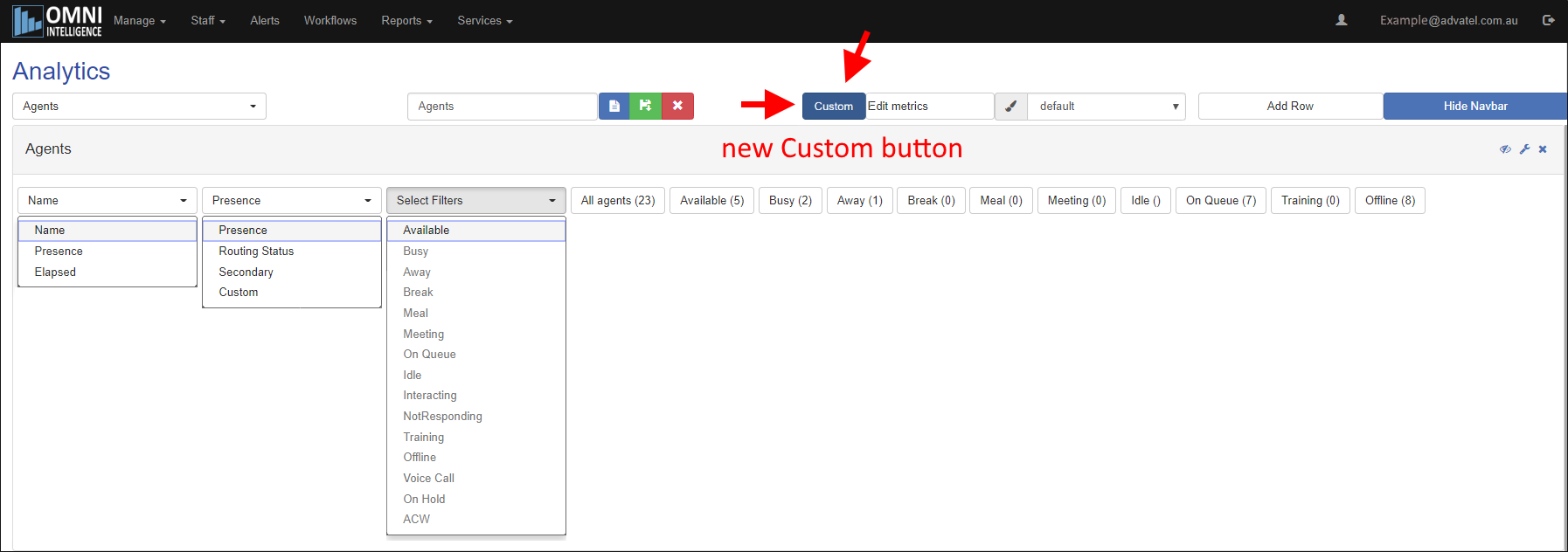
First Dropdown – Name / Presence / Elapsed
This changes the primary sort order
Second Dropdown - Presence / Routing Status / Secondary / Custom?
This changes the Filter Buttons displayed depending on what “Presence” type is selected
Third Dropdown – Select Filters
Enables the selection of pre-created filters that will (when applied) filter the view of agents statuses based on threshold settings.
Custom Button
This enables multiple presence states to be combined into a custom filtered button in the Supervisor: Extended panel. Pressing the custom button brings up
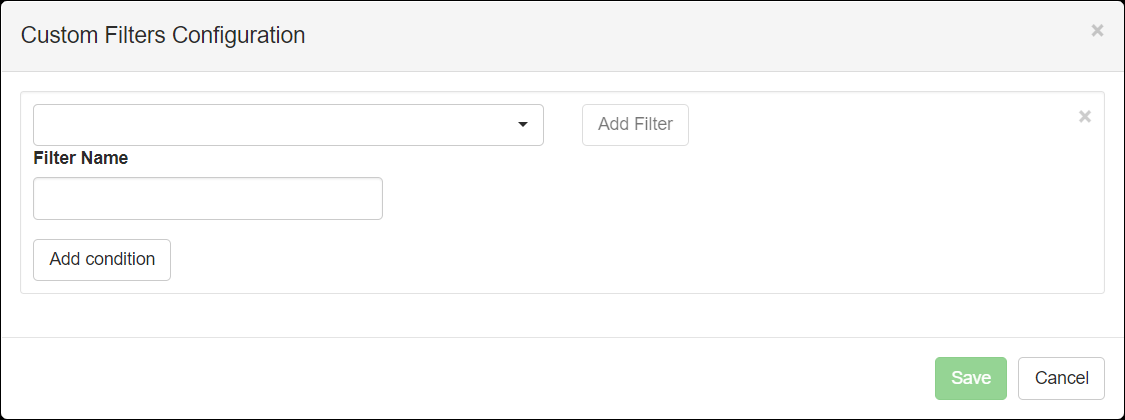
Give the filter a name and click [Add Condition]
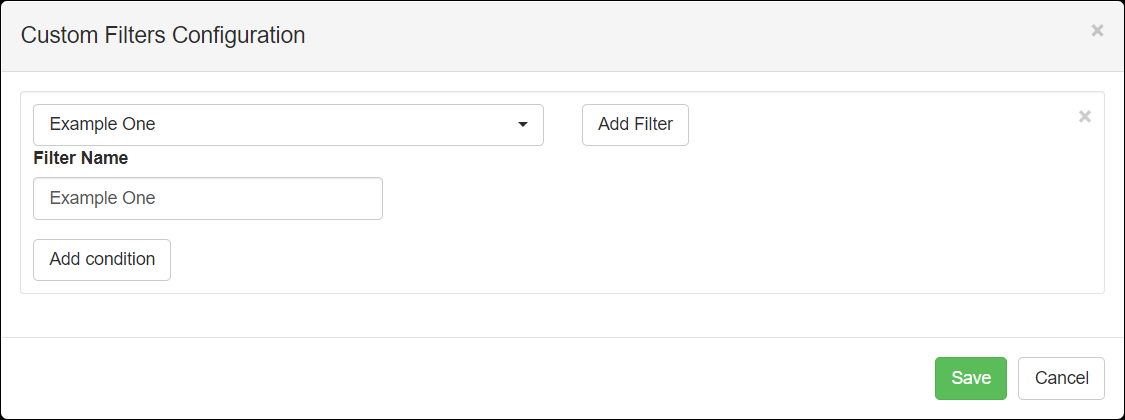
It will then add one condition that has to be matched in order for the filter to be met.
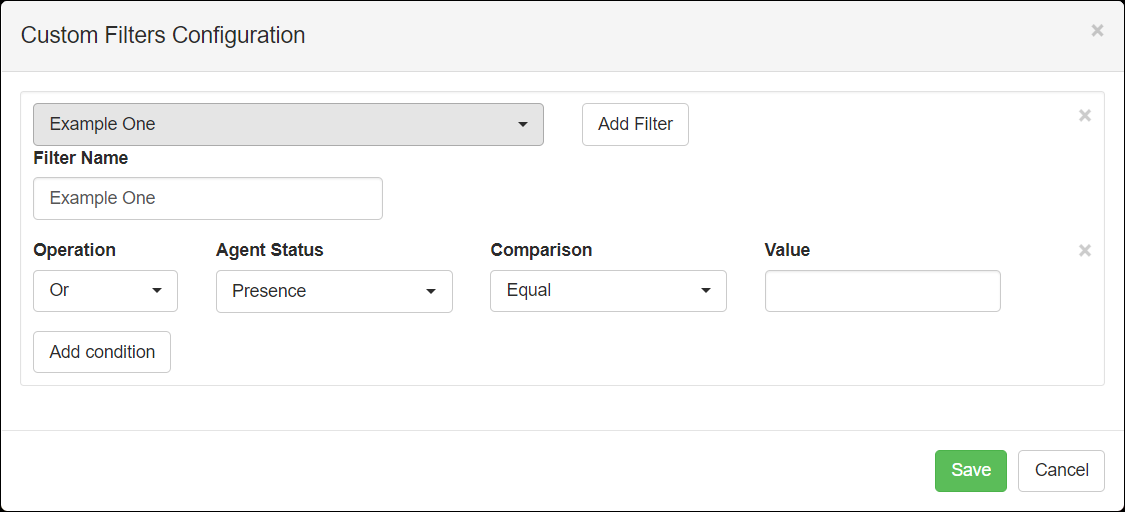
If you click [Add Condition] again, you can add a second and third condition (and so on).
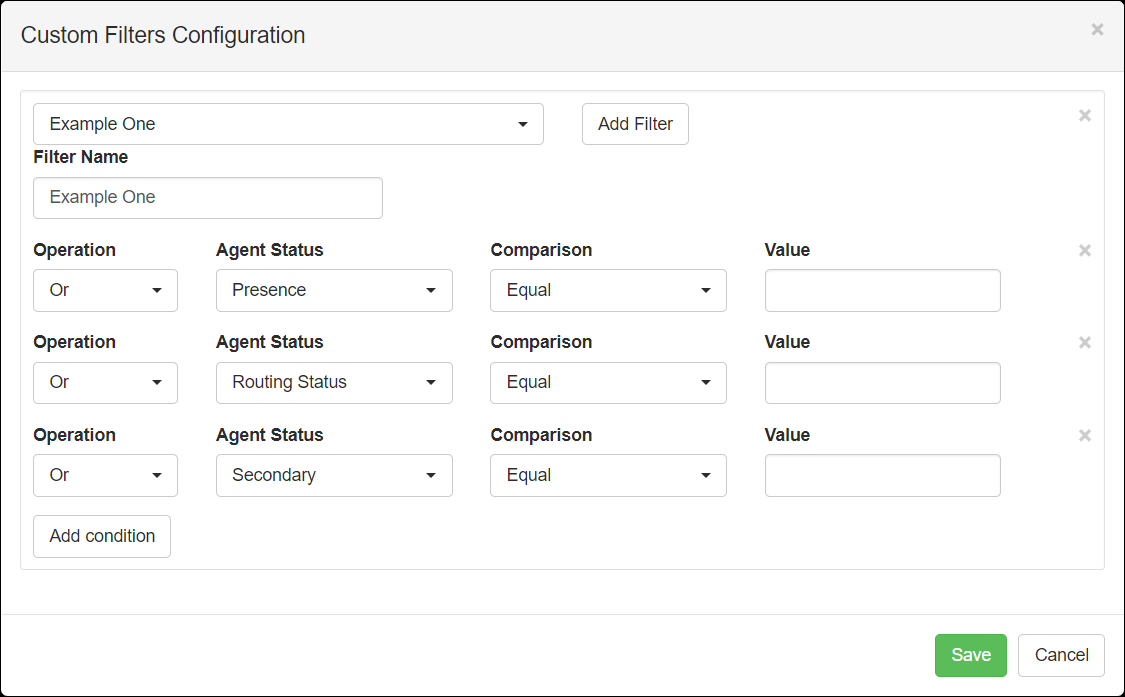
Once you have the conditions the way you want them, click [Save]
A new button will appear on the “Extended Agent Display” next to the [All Agents] options. In the example below, two filters have been created – Example One and Example Two.

Clicking each button will display the Agents whose Presence/Routing/Status match the conditions you created.
Building Conditions
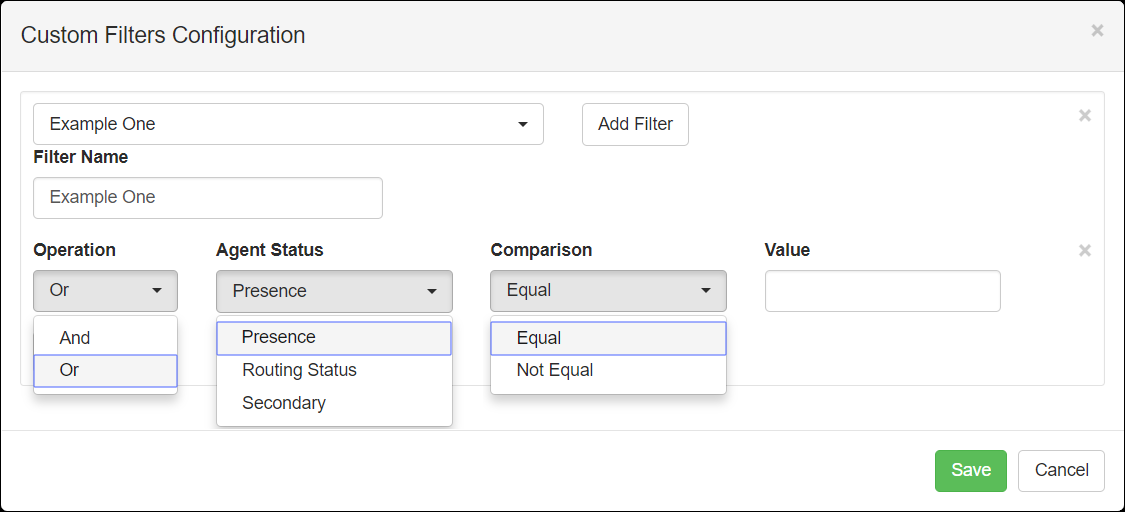
To build a condition you need to create a logical statement.
And / Or = means the conditions must all be true, or any of them can be true.
Agent Status = the field being tested
Comparison – Agent Status must match or must not match
Value = a text string
Building Conditions Examples
Please note that these examples may not suit every call centre.
Show all the agents not “On Queue”

Show all Agents on “After Call Work”

Show all Agents on “Who Can Answer Calls Now”
(Please note that this configuration especially will not suit every call centre)
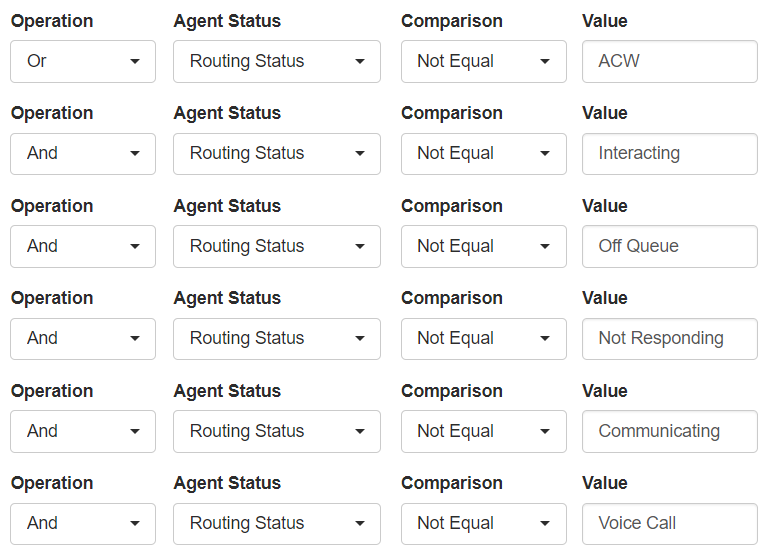
Configuring the display
Once you have set up your operation queues and selected your agents, you can click 'Save' to apply those changes. Your display may look something like this:

You can further configure this display by clicking the 'Spanner' icon on the top right. Here, you can configure presence/routing status duration colour codes based on duration thresholds.
A 'Normal' duration status will colour code the agent to a green status, whilst a 'Warning' status is yellow and a 'Danger' status is red.
Consider this example:
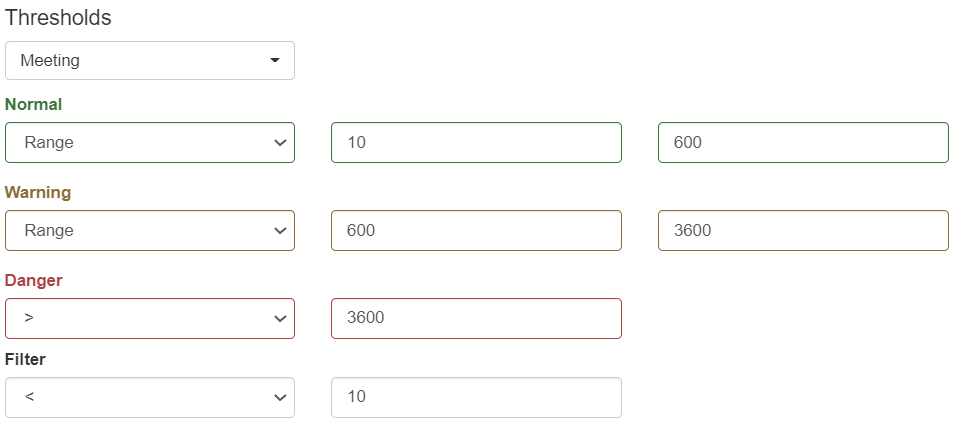
An agent with a 'Meeting' status will have the default grey duration status if they have been in a meeting for less than 10 seconds.
After that, they will appear with a green 'Normal' status until 10 minutes into the meeting (600 seconds), at which they will display a yellow 'Warning' status.
At one hour into the meeting (3600 seconds), they will then display a red 'Warning' status.
This is an example of what this could look like for a Voice Call:
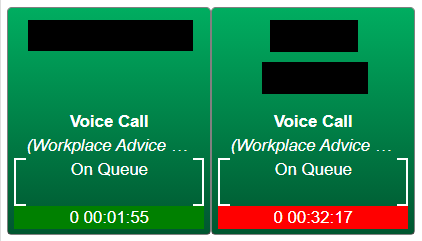
Here, the first caller shows a normal green status while the second caller has exceeded the 'Danger' threshold after calling for more than 30 minutes.
This can be useful to indicate whether certain calls or other activities are taking too much time for certain agents.
